By the time the late-summer light gilds the tiled roofs of Haro, the streets are already humming with anticipation. The air carries the sweet, earthy perfume of ripening grapes, and the hillsides shimmer with the movement of harvest crews—shears flashing, baskets filling, voices rising in the rhythm of vendimia. Visitors drift from one bodega to the next in the legendary Barrio de la Estación, where railway tracks once carried Rioja wines across Europe. Today, that same neighborhood carries something more elusive: a dialogue between vineyards and workshops, between the patience of the cooper and the imagination of the muralist. In Rioja and the Basque Country, wine has become more than a drink. It is a cultural canvas.
Vivanco: The World’s Great Wine Museum
No exploration of Rioja’s artisan soul is complete without a visit to the Museo Vivanco de la Cultura del Vino in Briones. Spread across more than 4,000 square meters, Vivanco Museum of Wine Culture is widely regarded as the world’s most important museum dedicated to wine. Here, centuries of craftsmanship converge: ancient presses carved from oak, amphorae and ceramics that carried vintages through the Roman Empire, medieval drinking vessels, Renaissance engravings, and contemporary art by masters like Picasso, Miró, and Sorolla.
The Vivanco family has elevated wine culture to the level of fine art, creating a space where history, aesthetics, and innovation meet. This commitment has been recognized with the prestigious Special Achievement Award from the Great Wine Capitals network—an honor reserved for institutions that transcend ordinary wine tourism. For travelers, the museum is not simply a stop on an itinerary; it is a destination in itself, a place where the global story of wine unfolds in one of Rioja’s most charming villages.
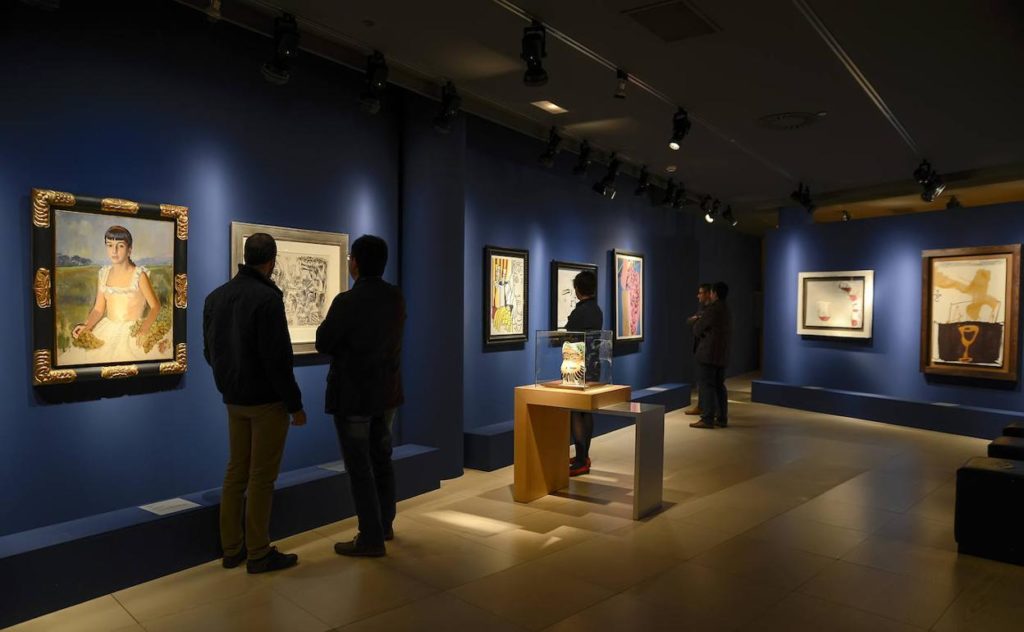
Photo: Vivanco Museum of Wine Culture.
Barrels That Breathe History
Step inside Bodegas Muga, and you hear it before you see it: the sharp crack of oak staves bending to the cooper’s fire. While most wineries outsource their barrels, Muga insists on maintaining its own cooperage, one of the few in Spain. Master coopers, hands blackened by heat, coax staves into shape with a rhythm that feels closer to music than to manufacturing. The scent of toasted oak mingles with fermenting must; it’s a sensory bridge that reminds visitors that every glass of Gran Reserva is born from wood as much as from vine.
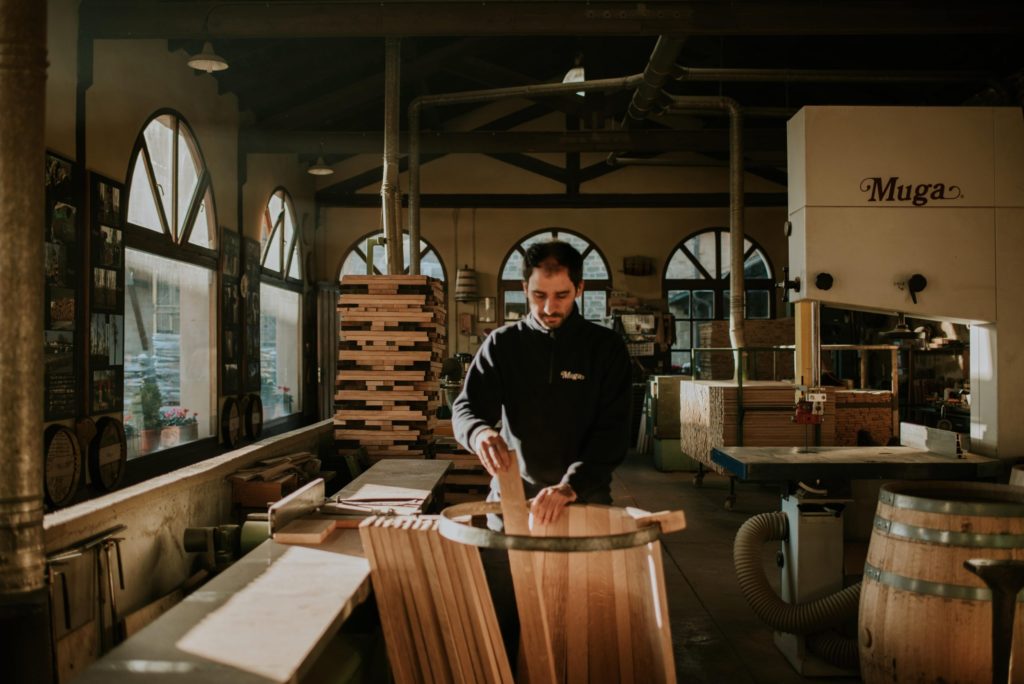
Photo: Bodegas Muga.
Architecture, Art, and Landscape
In Laguardia, Bodegas Campillo stands as a manifesto of architecture and wine tourism. Designed as a great stone palace rising from the vineyards, its sweeping staircase recalls a classical temple where wine holds the place of honor. Today, the winery awarded with a Best Of Wine Tourism 2025 has become a stage for design, exhibitions, and artistic programs that connect architecture and culture to the surrounding landscape.

Photo: Bodegas Campillo.
Nearby, Bodegas Murua offers a different kind of journey. Its tasting rooms are adorned not just with bottles but with sacred art, antique furniture, and modern paintings. Each corridor is part gallery, part sanctuary, creating a setting where centuries of spirituality and aesthetics converge with the wine in the glass.
And then there is Campo Viejo, perhaps Rioja’s most globally artistic voice. From its base in Logroño, the winery has launched artistic collaborations in cities around the world—murals painted with street artists in New York, London, and Toronto; ephemeral installations where color, sound, and wine collide; creative festivals that carry Rioja’s spirit far beyond Spain. Campo Viejo has positioned itself as a cultural ambassador, showing that wine can be not just a product of place but a catalyst for global creativity.
Threads, Staves, and Stained Glass
In Bilbao itself, the artisan collaboration movement has found fertile ground among the city’s creative establishments, where local glassblowers, metalworkers, and textile artists are reimagining wine service alongside innovative hospitality concepts.
The movement has also caught the attention of textile artists who work with grape pomace dyes, creating fabrics that carry the literal essence of specific vintages. At boutique hotels like Palacio Arriluce, featuring fresh, locally sourced ingredients and seasonal options, this breakfast is an experience in itself extends to partnerships with local artisans who create everything from hand-blown stemware to custom-forged sommelier tools.
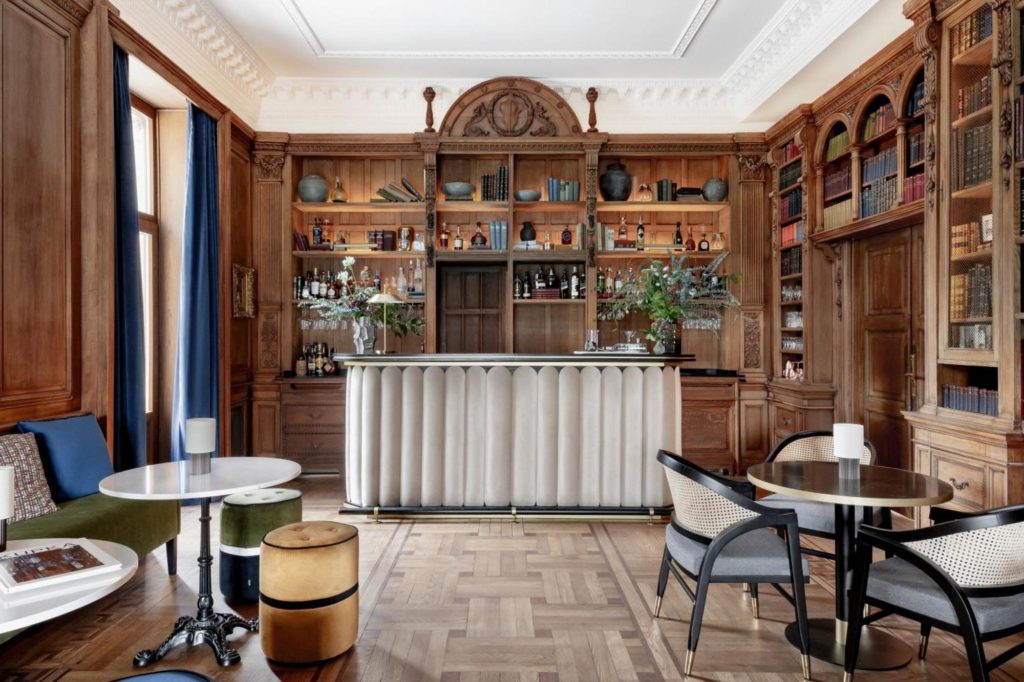
Photo: Arriluce Palace Hotel in Bilbao.
In Logroño, Bodegas Ontañón approaches craft from another angle. Their Temple of Wine is a soaring hall where sculpture, stained glass, and textile art converse with bottles lined along quiet chapels of stone. Ontañón has long collaborated with local artisans—quilters who stitch almazuelas (Rioja’s patchwork textiles), artists who design limited-edition labels, and even muralists whose work spills out into the streets of the city. Wine here is not only consumed; it is contemplated, framed within a gallery of human imagination.
A Museum for All Senses
Across the Ebro, in the medieval village of Laguardia, Villa Lucía has redefined what a wine museum can be. Here, visitors trace the tools of the trade with their hands: the curve of a barrel stave, the rough edge of a pruning shear, the cool weight of an antique amphora. Universal accessibility has been built into every corner—tactile displays, immersive 4D films, aromas that evoke vineyards at dawn. Add a restaurant committed to seasonal produce from Rioja Alavesa’s gardens and you have an experience that feeds more than curiosity; it nourishes identity.
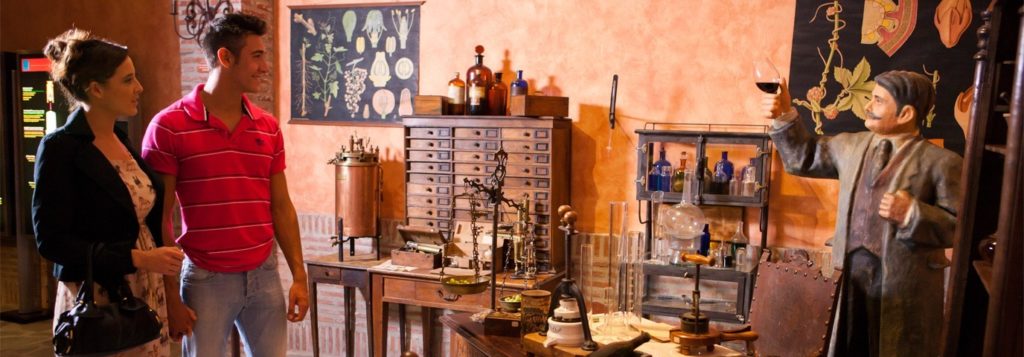
Photo: Villa Lucía in Laguardia.
Markets, Murals, and the Memory of Taste
In Haro’s winding alleys, walls are brightened by murals that celebrate vendimia and vineyard life, an open-air gallery that guides visitors from cellar to cellar. In Logroño, artisans still shape botas—the traditional leather wineskins—while nearby fairs brim with preserves from the fertile huertas of Rioja and the Basque Country: peppers roasted to smoky sweetness, white asparagus preserved in glass, jewel-like conserves of fruit. These gastronomic keepsakes remind travelers that the region’s artistry doesn’t stop at the winery gate.
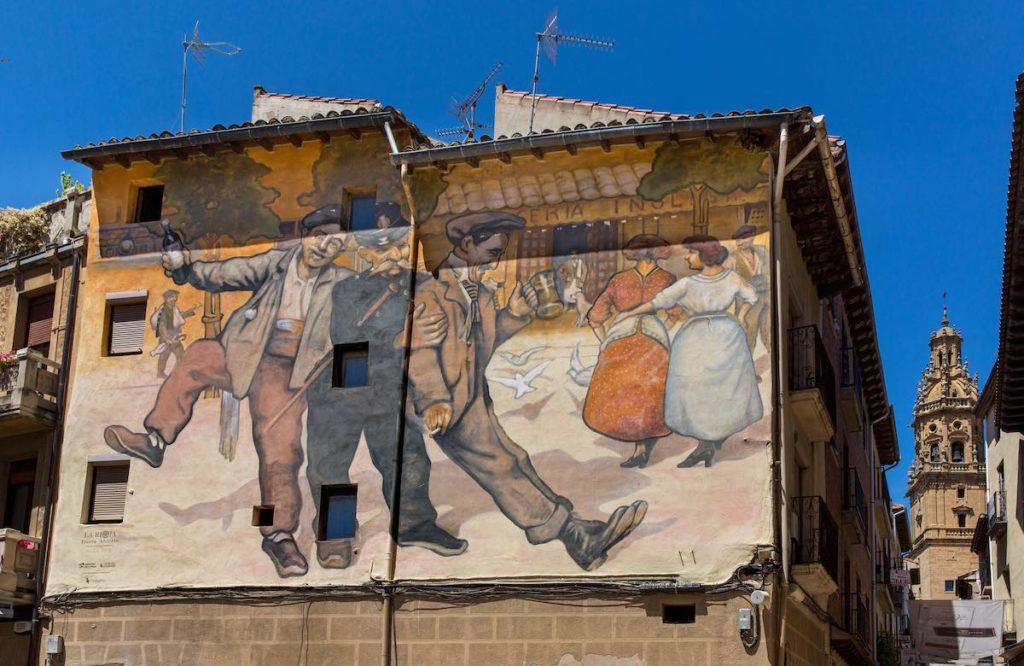
Photo: Haro Tourism.
MUWI Rioja Music Wine Fest and other festivals we enjoy here weave together concerts, wine tastings, gastronomy, and design, drawing global attention to a region where every sensory detail matters.
At Franco-Españolas, craft markets animate historic courtyards, linking contemporary makers to the legacy of one of Rioja’s great names. The result is a mosaic where food, wine, and craft all become souvenirs—memories to be uncorked long after the trip is over.
Recognition on the Global Stage
Such innovation has not gone unnoticed. The Best Of Wine Tourism Awards, part of the Great Wine Capitals network, have in recent years spotlighted this cultural dimension as much as the oenological one. In 2023, honors went to Marqués de Murrieta for its architectural restoration, to Mayor de Migueloa in Laguardia for its heritage revival, and to Bodegas Beronia for sustainable design. The following year, the spotlight shifted to the Haro Station District, FyA Hotel-Bodega with its remarkable ceramics collection, and Casa Cosme Palacio, among others. Together, they reveal a region where tradition and innovation meet at the crossroads of barrel, canvas, and kitchen.
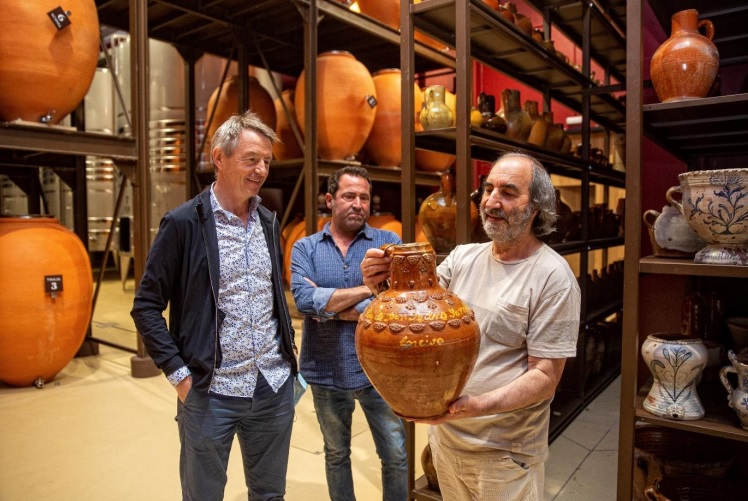
Photo: Bodega FyA.
The New Pilgrimage
Rioja and Bilbao have quietly reshaped wine tourism. A visit here is no longer only about terroir and tannins. It is about seeing a cooper lift sparks from oak, touching the stitched fabric of an almazuela, marveling at Vivanco’s priceless collections, or tasting a jar of piquillo peppers that carries the heat of late-summer sun. It is about conversations between artisans and winemakers, between history and modern design.
In this corner of Spain, wine is the starting point—but the journey continues in wood shavings, brushstrokes, textiles, and flavors. The traveler who comes for a glass leaves with something richer: the certainty that craft, in all its forms, has become Bilbao and Rioja’s true signature vintage.
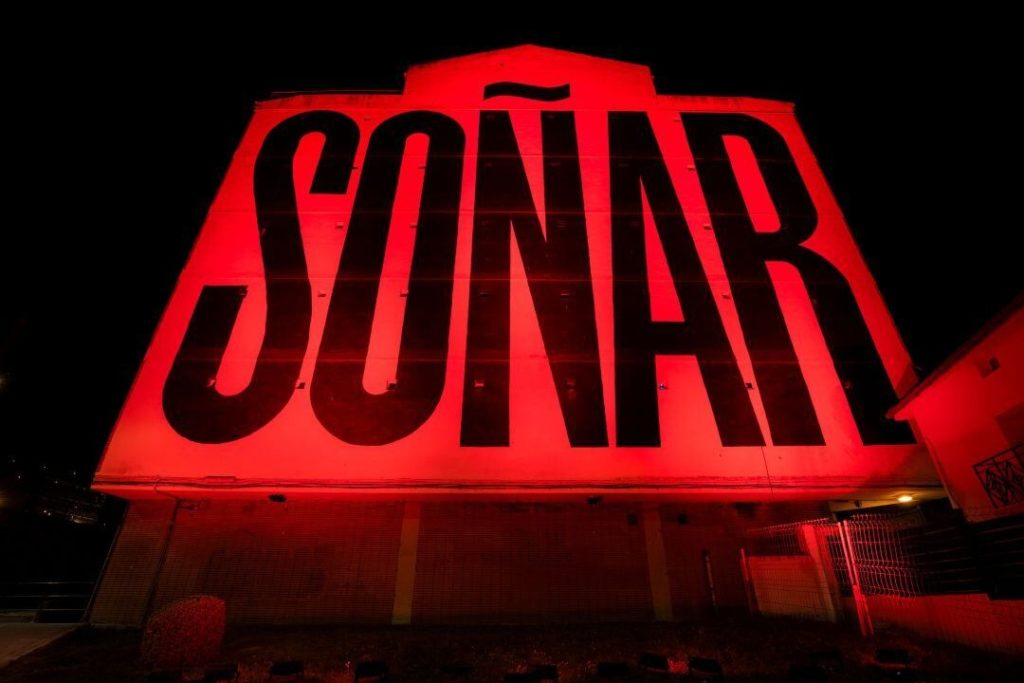
Photo: Ayuntamiento de Bilbao.
Text by Liz Aldayturriaga
Featured photo: Bodegas Ontañón
Learn more about Bilbao-Rioja Great Wine Capitals